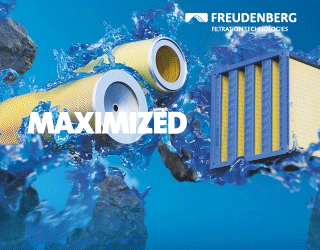The most recent HRSG Forum, conducted virtually July 21, 2022, broadly addressed high-pressure (HP) evaporator deposits, and specifically under-deposit corrosion (UDC), a leading cause of HRSG tube failures (HTF).
The first presentation, by Barry Dooley, Structural Integrity Associates Inc, focused on why UDC occurs, how to detect and analyze it, and its role, along with other mechanisms, in contributing to HTF explained why/when removing these deposits is important. Then the second presentation, “So I Need to Chemical Clean My HRSG. . .Now What?” delivered by Doug Hubbard, an independent consultant, was chock full of practical guidance for the onsite user community. Both presentations are available for viewing on the HRSG Forum website and below.
Hubbard’s years of experience, with one of the nation’s largest electric-utility powerplant owner/operators, were etched into every slide, wisdom suitable for a laminated pocket guide of bullet points one pulls out during all stages of chemical cleaning.
Example: “Waste disposal can be up to half the cost of the cleaning,” he said. Those 20,000-gal frac tanks that the cleaning contractor had delivered to your site? “Inspect every one of them,” Hubbard urged, “and make sure they were thoroughly cleaned, and if not, send them back.” If you don’t, then you just took ownership of any nasty residue from the last place those tanks were used, such as the oil/gas fields.
Good questions to ask: What do you do if you fill up your frac tanks? How do I handle the material if it is deemed hazardous waste? How do I manage a spill after the tank leaves the site? To think through these scenarios, Hubbard doesn’t just say “involve” your environmental subject matter expert, he/she must be “intimately involved” in the entire project, from initial planning to project closure.
Resist the temptation to cut a few hours from the cleaning process, even if the higher-ups are pressuring you in the interest of getting back online quickly. In fact, Hubbard recommends doubling the time for chemicals to circulate from what is indicated by the static test (usually done by your contractor)—for example, from six to 12 hours—especially if it’s a cleaning for UDC and hydrogen damage.
You’ve just spent extensive man-hours and dollars planning the cleaning, installing temporary piping, pumps, heat exchangers, etc—and now you want to save three hours of outage time and risk subverting the result? Where’s the logic?
One good reason to allow ample margin in circulation time: You won’t really know if your tube sample is representative of all the corrosion deposits in the HP-evaporator tube surfaces.
You must ensure that the unit is “fully flushed” to avoid an aggravating startup. Passivation of the unit, done chemically after the cleaning, only gives weak protection of the surfaces until the system is restored during a normal startup. For this reason, the unit must be returned to service immediately after cleaning and run at full drum pressure for at least 76 hours (an empirical value from Hubbard’s experience) to maintain the passivation layer.
It is critically important to “hydro” the unit prior to circulating the chemicals, he warns. “Leaks are manageable when you are passing only water through; they don’t get better as cleaning proceeds,” Hubbard noted wryly. Don’t assume your valves will hold either, he added. If you do have a leaking valve during cleaning, remember to flush the other side.
Three types of cleanings delineated by Hubbard are (1) pre-operational (to remove mill scale, cutting oils, etc), (2) high-deposit iron removal, and (3) UDC/H₂ damage cleaning. Each cleaning has its own characteristics with respect to solvent selection, circulation times, discharge material, etc. Cleaning time will be appreciably higher if you have any corrosion cells.
Determining which level of cleaning you need is based on analysis of the deposits and static and dynamic tests with the deposit material. A static test involves taking a 1-in.-tube cross section, placing it in a beaker with solvent and stir bar on a hot plate, and timing how long it takes for the deposit to break up and fall to the bottom. In a dynamic test, the tube sample is placed in a test loop and solvent is pumped around to determine how long it takes for the corrosion products to break up.
Cleaning generates hydrogen gas, so make sure the system is properly vented of gases and air at the high points at least every hour. An “enormous quantity of fumes can get into the steam turbine,” he cautioned, if you don’t backfill the superheater with ammoniated condensate.
Other bullet points for that pocket guide:
- Don’t assume all the deposits are iron, even if that might the case the majority of the time.
- Flows should be between 2 ft/sec (minimum flow for the cleaning solvent) and 5 ft/sec (maximum flow for the corrosion inhibitor).
- Color-code a system flow diagram, mark dead legs, valves, and the cleaning path (fluid entry point and exit point).
- Walk down the system as the cleaning proceeds.
- Cover storm drains.
- Add 5-10 deg F to the cleaning process temperature as extra margin; remember that the fluid temperature is not the tube surface temperature.
- Pull samples while cleaning is taking place to “check on what’s going on.”
Evaporator failure mechanisms. Dooley’s slides first placed UDC in the context of other leading chemically induced HRSG reliability issues and contributors to failures, then went on to show resplendent examples of UDC, UDC with acid phosphate corrosion (APC), and pictures of deposits under various treatment regimes.
Using the term “Repeat Cycle Chemistry Situations (RCCS),” Dooley explained that damage and resulting failures arise when a plant has experienced two or more of these RCCS: Corrosion products, HRSG evaporator deposition, contaminant ingress (no reaction), drum carryover, lack of shutdown protection, inadequate alarmed on-line instrumentation, not challenging the status quo, non-optimum chemical cleaning, and high level of air in-leakage. RCCS analysis methodology is based on over 260 plant assessments worldwide.
If you want to benchmark your plant’s situation, Dooley’s slides also include categories within several of the nine RCCSs listed above. For example, under “contaminants,” Dooley notes “high number of condenser tube leaks” and “continuing to operate when contaminant levels exceed action and shutdown limits.”
The balance of the recorded presentation discusses why taking tube samples is critical, how to analyze tubes for deposits and damage, and what the morphologies look like under close examination by high-powered lab instruments. A detailed chemical and physical analysis of the deposits and deposit gradations, distribution, and loading, along with tube conditions, are required before determining how to mitigate or prevent them in the future. Several slides of tube samples show the consequences of poor chemical cleanings and/or application of film forming substances.
During the Q&A, Dooley notes that 65% of the plants assessed experience online instrumentation issues, but also that operators often are not trained on how to recognize and respond to an exceedance event.
Technical guidance documents are available from IAWPS at no cost for many of the topics Dooley addressed.









